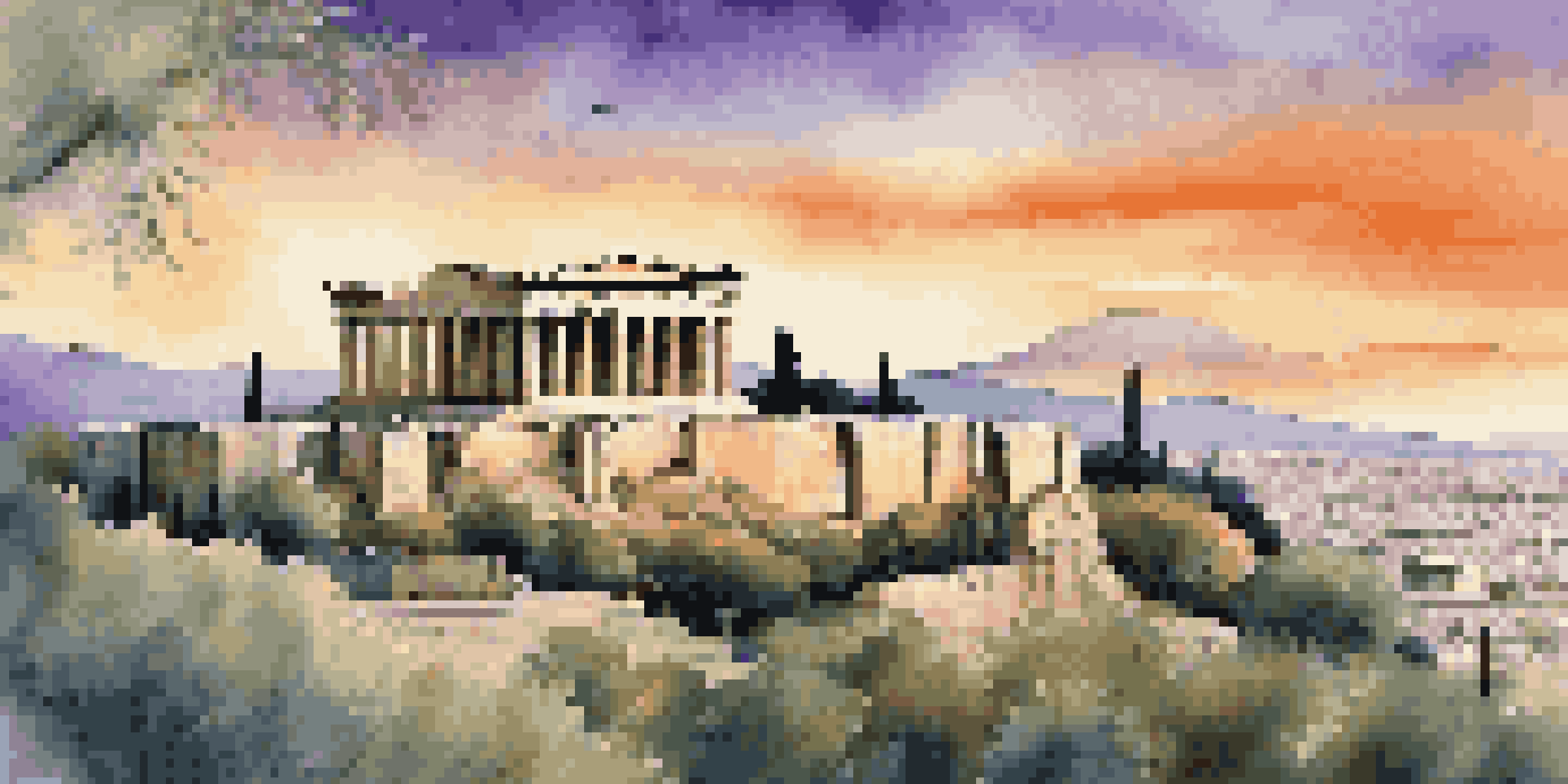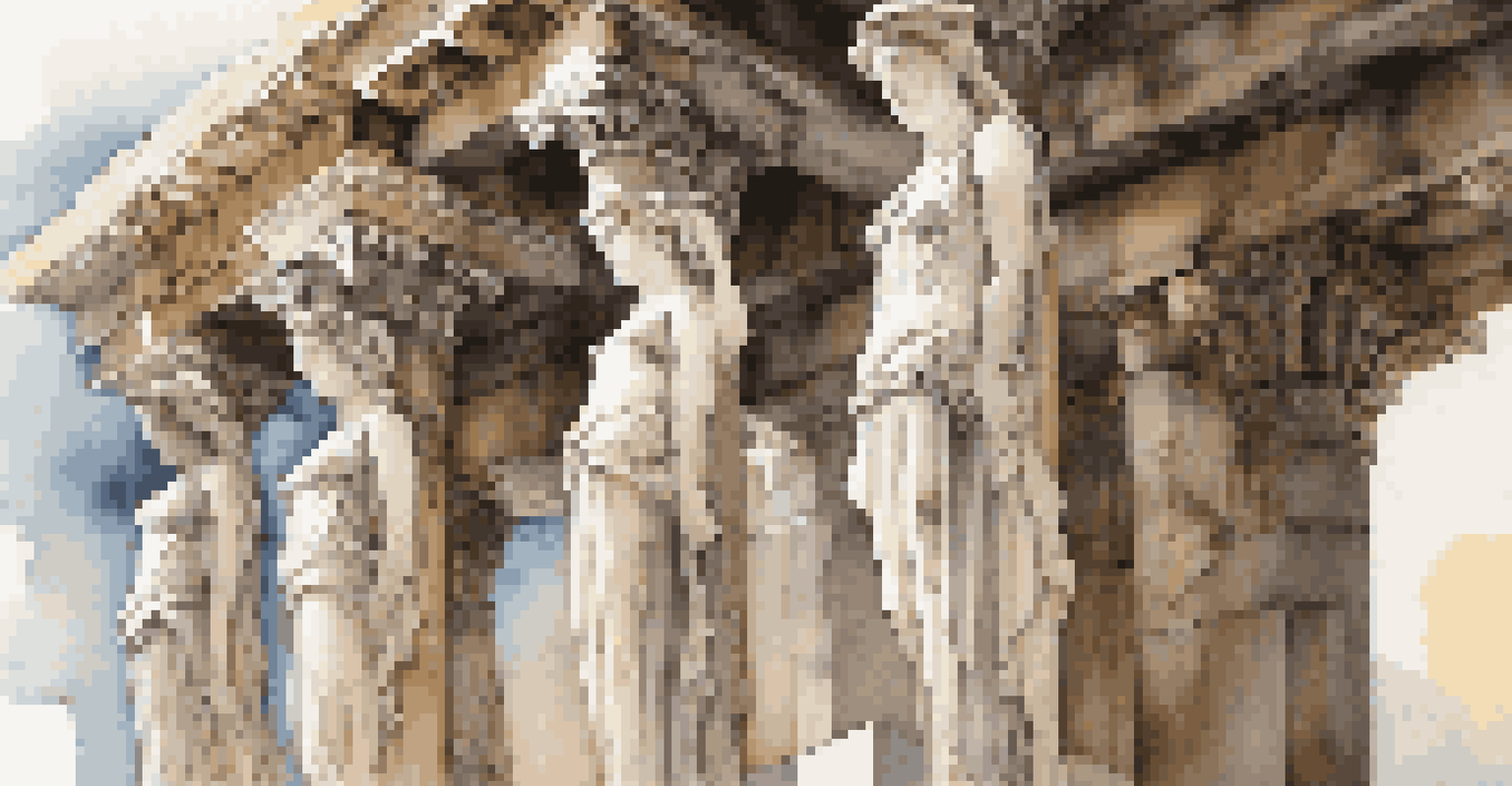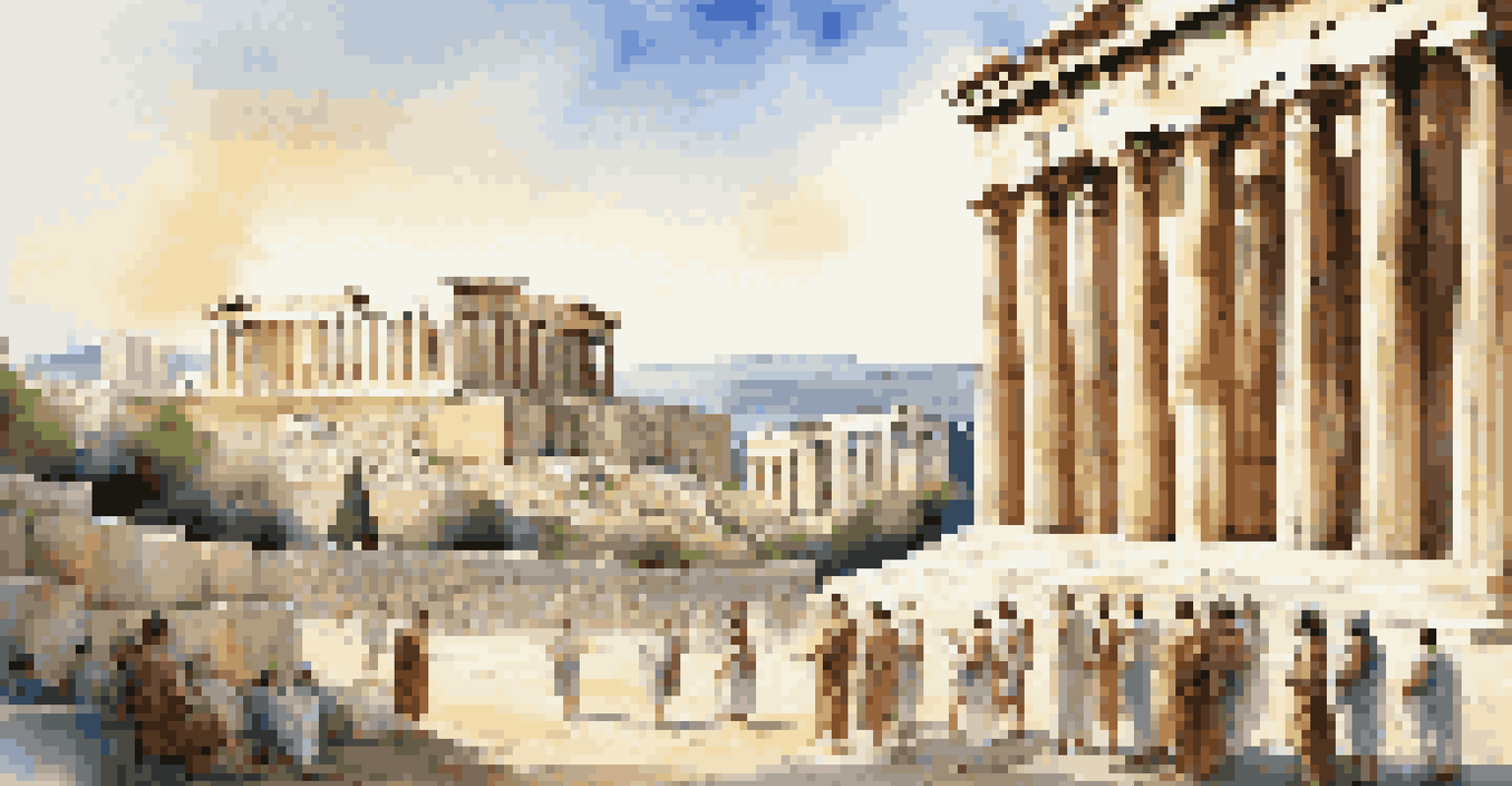The Acropolis: A Symbol of Ancient Greek Civilization

Introduction to the Acropolis: A Historical Gem
The Acropolis, perched majestically above Athens, is more than just a collection of ancient ruins; it’s a symbol of the glory of Ancient Greece. Dating back to the 5th century BC, this citadel was a hub of religious and cultural life. Many visitors are drawn to its iconic structures, particularly the Parthenon, which stands as a testament to the architectural ingenuity of its time. But the Acropolis is not only about stunning architecture; it also tells the story of a civilization that greatly influenced the world.
The roots of education are bitter, but the fruit is sweet.
As you stroll through the site, you can almost hear the echoes of ancient philosophers and statesmen who once walked these paths. The Acropolis represents the pinnacle of Athenian democracy, art, and philosophy, making it a key landmark in understanding Western civilization. It’s fascinating how a place so steeped in history continues to inspire awe and respect today.
The significance of the Acropolis extends beyond its physical structures; it embodies the ideals of beauty, power, and the quest for knowledge that defined Ancient Greece. This is why the Acropolis is not just a site for tourists, but a pilgrimage for those seeking a connection to a rich historical legacy.
The Architectural Marvels of the Acropolis
At the heart of the Acropolis lies the Parthenon, a temple dedicated to Athena, the goddess of wisdom and warfare. This architectural masterpiece is renowned for its Doric columns and intricate sculptures, which reflect the artistry of Ancient Greece. The Parthenon's design is not only visually striking; it also incorporates innovative engineering techniques that have stood the test of time. Visitors often marvel at how such a complex structure was built without modern machinery.

Besides the Parthenon, the Acropolis is home to other remarkable structures like the Erechtheion and the Temple of Athena Nike. Each building has its own unique story and purpose, contributing to the overall narrative of Athenian society. The Erechtheion, for instance, is famous for its Caryatids—columns shaped like women that add a touch of elegance to the site.
Acropolis: A Symbol of Ancient Greece
The Acropolis represents the cultural and historical pinnacle of Ancient Greece, embodying ideals of democracy, art, and philosophy.
These architectural wonders invite us to ponder the values and beliefs of the people who built them. They serve as a reminder of the sophistication of Ancient Greek civilization and their pursuit of beauty and harmony in art and architecture.
Cultural Significance of the Acropolis
The Acropolis is not just an architectural site; it’s a cultural touchstone that has shaped Greek identity for centuries. It has served as a symbol of resilience and independence, especially during the struggles for freedom from foreign rule. The sight of the Acropolis has inspired countless artists, poets, and thinkers throughout history, becoming a muse that transcends time and geography.
The unexamined life is not worth living.
In addition to its national significance, the Acropolis also attracts a global audience, fostering cultural exchange and understanding. Every year, millions of visitors from around the world come to pay homage to this ancient site, further embedding it in the collective consciousness. This international interest highlights the universal themes of democracy, philosophy, and artistry that originated in Ancient Greece.
As a cultural icon, the Acropolis encourages us to reflect on our shared human heritage and the ideals that continue to resonate today. It serves as a powerful reminder of the importance of preserving our history while embracing the future.
The Acropolis and Its Role in Education
The Acropolis has long been a focal point for education and scholarship, serving as a living classroom for those interested in history and archaeology. Schools and universities often organize trips to this historic site to provide students with a tangible connection to their studies. Walking through the ruins allows learners to gain insights that textbooks alone cannot provide, making history come alive.
In recent years, educational programs have expanded to include workshops and guided tours that delve into the significance of the Acropolis. These initiatives aim to foster a deeper understanding of Ancient Greek culture and its impact on modern society. By engaging with the site, students are encouraged to think critically about the past and its relevance to today's world.
Architectural Wonders Inspire Awe
The remarkable structures of the Acropolis, particularly the Parthenon, showcase innovative engineering and artistic mastery that captivates visitors.
Furthermore, the Acropolis serves as a backdrop for various cultural events, including lectures and art exhibitions, further enriching the educational experience. It’s inspiring to see how a historical site can continue to play a vital role in shaping minds and igniting curiosity.
Preservation Efforts for the Acropolis
Preserving the Acropolis is a delicate task that requires ongoing effort and dedication. Various organizations and the Greek government have worked tirelessly to restore and maintain the site, ensuring that future generations can appreciate its beauty and significance. This involves not only physical restoration but also research into the best methods to protect the structures from environmental wear and tear.
One of the challenges faced by preservationists is the impact of pollution and climate change on the ancient stones. Innovative techniques, such as using advanced materials and careful cleaning methods, are being employed to combat these issues. Additionally, strict regulations are in place to manage tourism and minimize the potential damage caused by foot traffic.
These preservation efforts highlight the importance of safeguarding our cultural heritage. By investing in the Acropolis, we acknowledge its role in our collective history and the lessons we can learn from it, reminding us of the responsibility we have to protect such treasures.
The Acropolis in Modern Culture
In contemporary society, the Acropolis continues to be a powerful symbol that transcends its physical presence. It represents ideals such as democracy, beauty, and the pursuit of knowledge, inspiring movements and individuals around the globe. Artists and creatives often draw from its rich history, using the Acropolis as a source of inspiration in their work.
Moreover, the image of the Acropolis frequently appears in various forms of media, from films to literature, reinforcing its status as a cultural icon. Its silhouette is instantly recognizable, serving as a symbol of not just Greece, but the broader Western civilization. This enduring legacy keeps the spirit of Ancient Greece alive in our modern world.
Preservation of Cultural Heritage
Ongoing preservation efforts for the Acropolis highlight the importance of safeguarding our cultural heritage for future generations.
The Acropolis also plays a role in discussions about heritage and identity in an increasingly globalized world. As we navigate our cultural landscapes, the lessons learned from this ancient site remind us of the importance of understanding our history while embracing diversity.
Conclusion: The Timeless Appeal of the Acropolis
The Acropolis, with its timeless beauty and rich history, remains a beacon of human achievement and aspiration. It serves as a reminder of the incredible advancements made by Ancient Greece in art, philosophy, and governance. The stories etched into its stones resonate with us, urging us to reflect on our own values and contributions to society.
As we look to the future, the Acropolis stands as a testament to the power of culture and creativity. It invites us to explore our past while envisioning a world where we can learn from history and build a better tomorrow. The lessons embedded in this ancient site are as relevant today as they were millennia ago.

In a world that often feels fragmented, the Acropolis brings us together, reminding us of our shared heritage and the enduring human spirit. Whether you visit in person or explore through literature and art, the Acropolis continues to inspire and educate, solidifying its place as a symbol of Ancient Greek civilization and beyond.